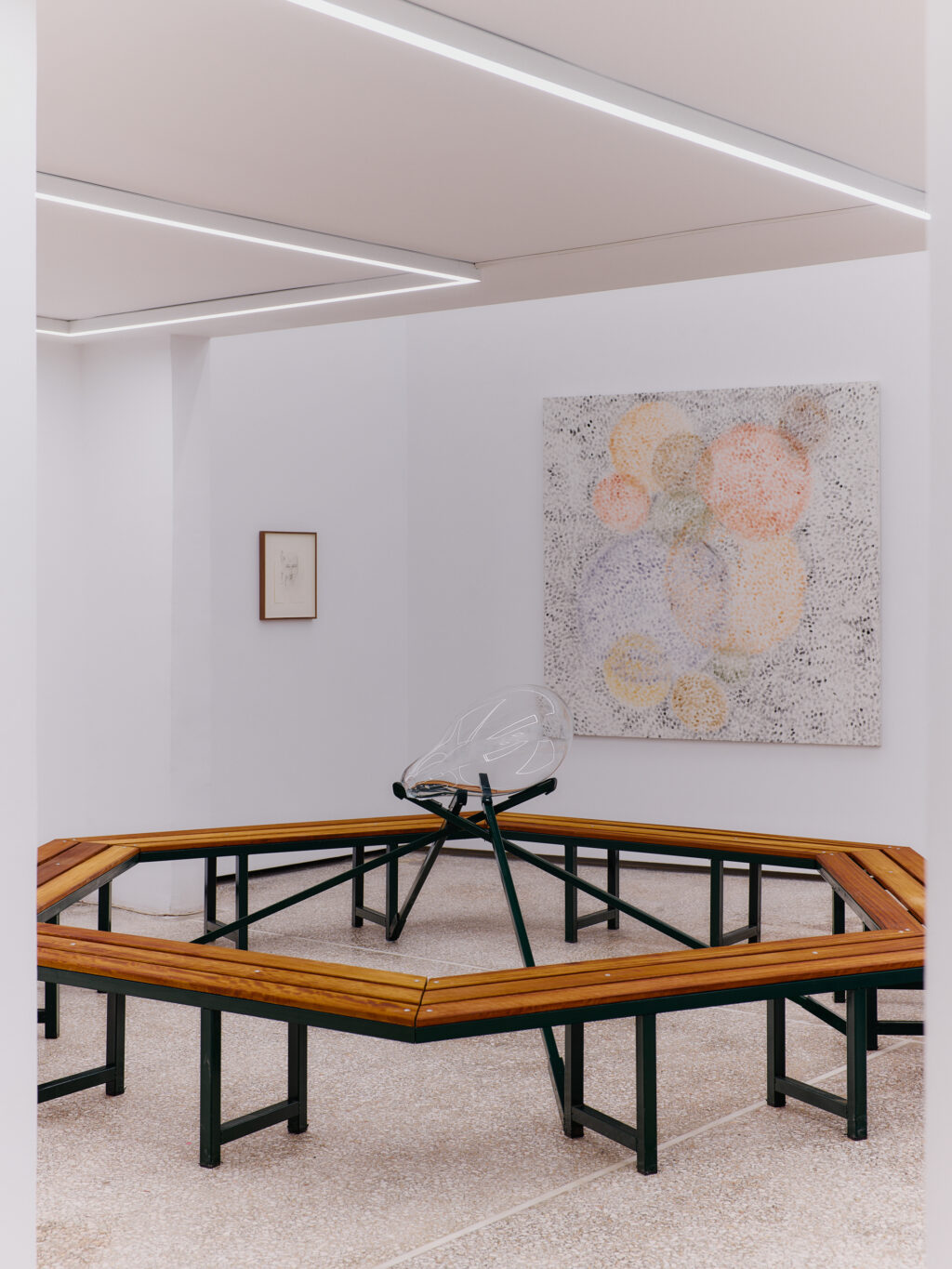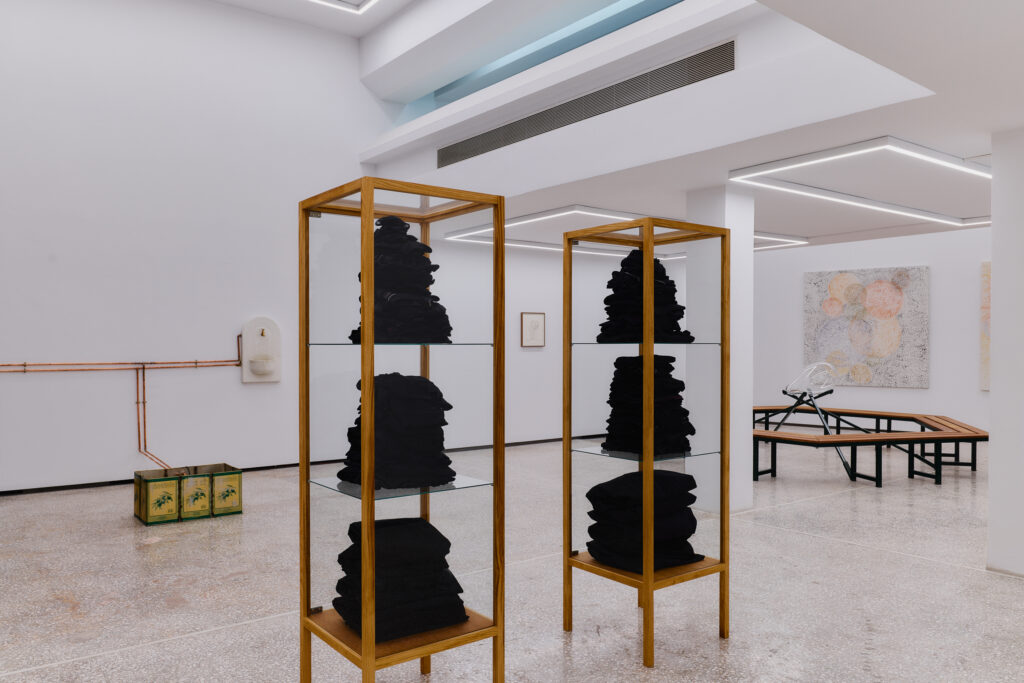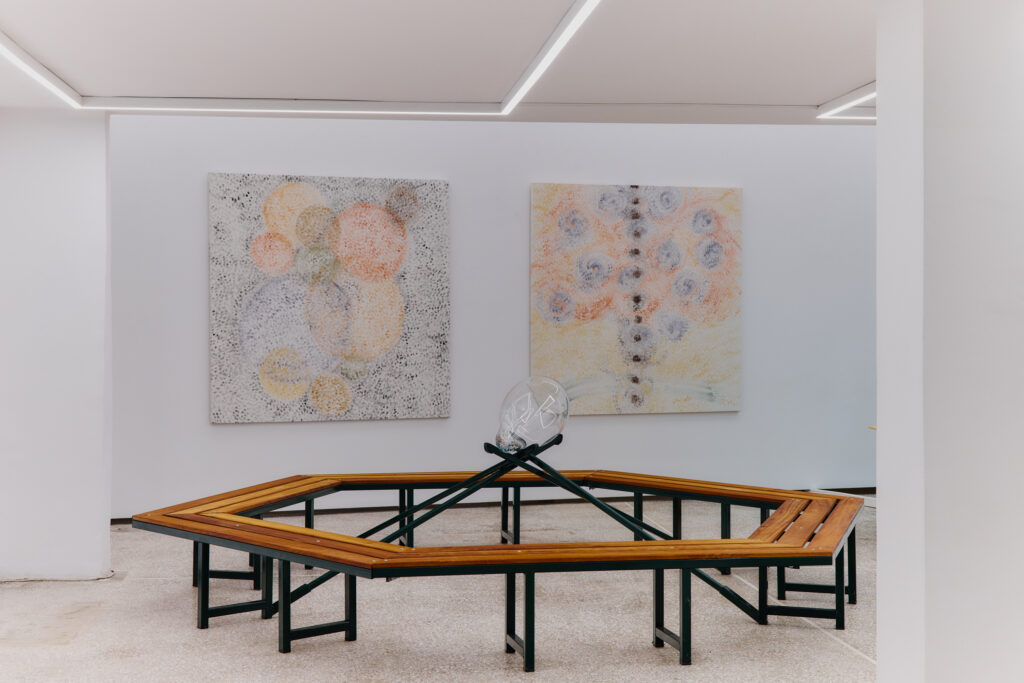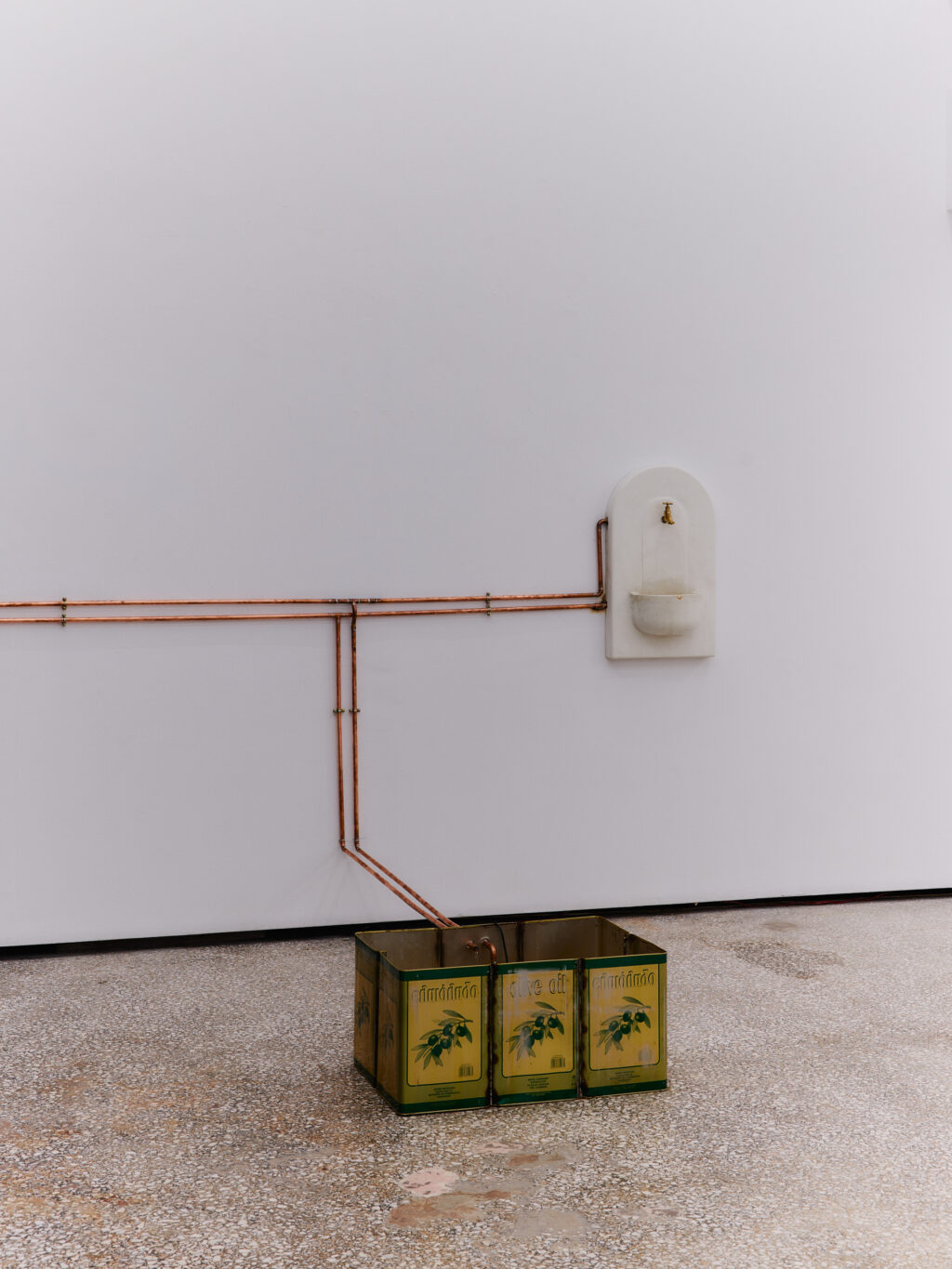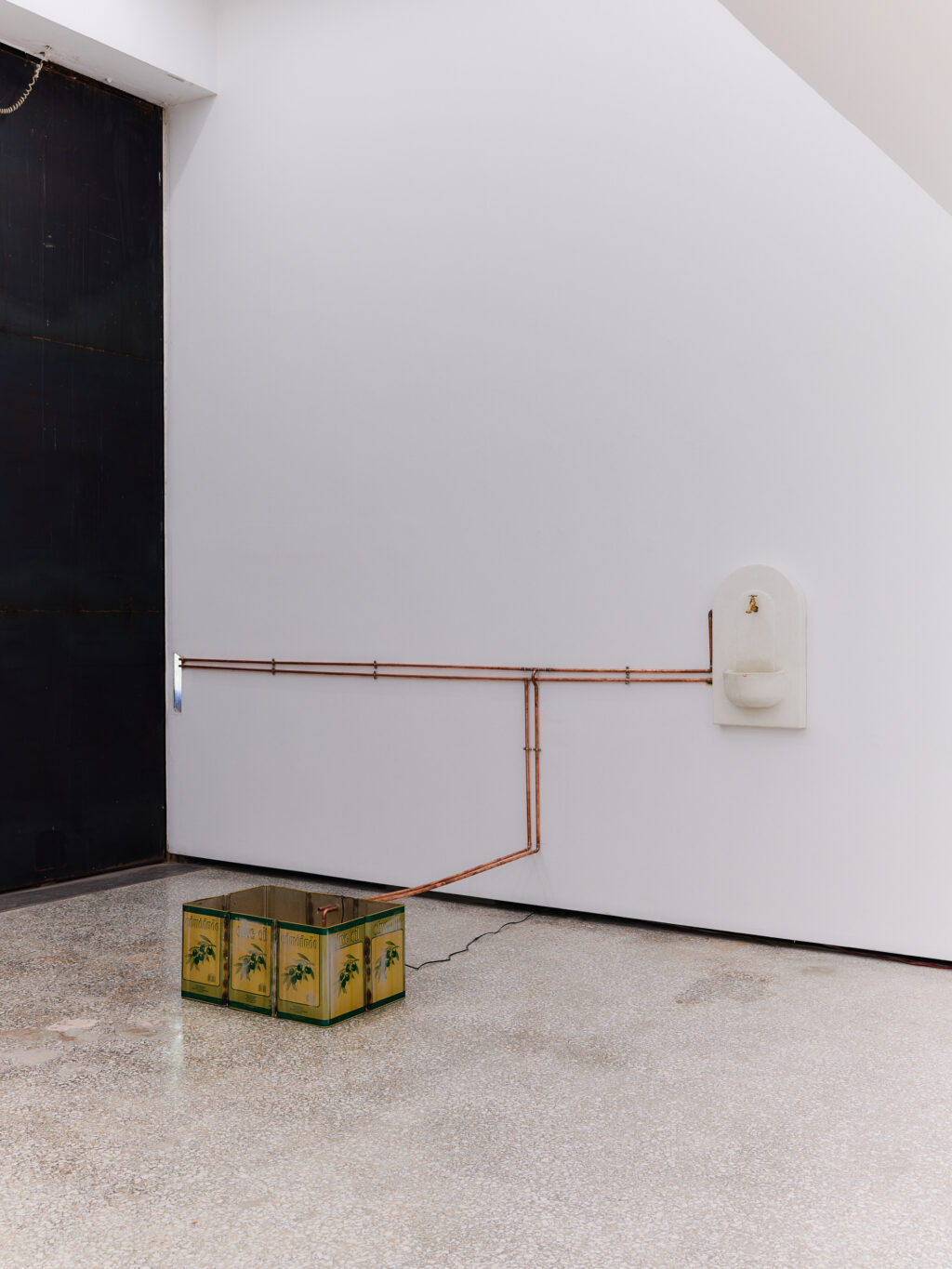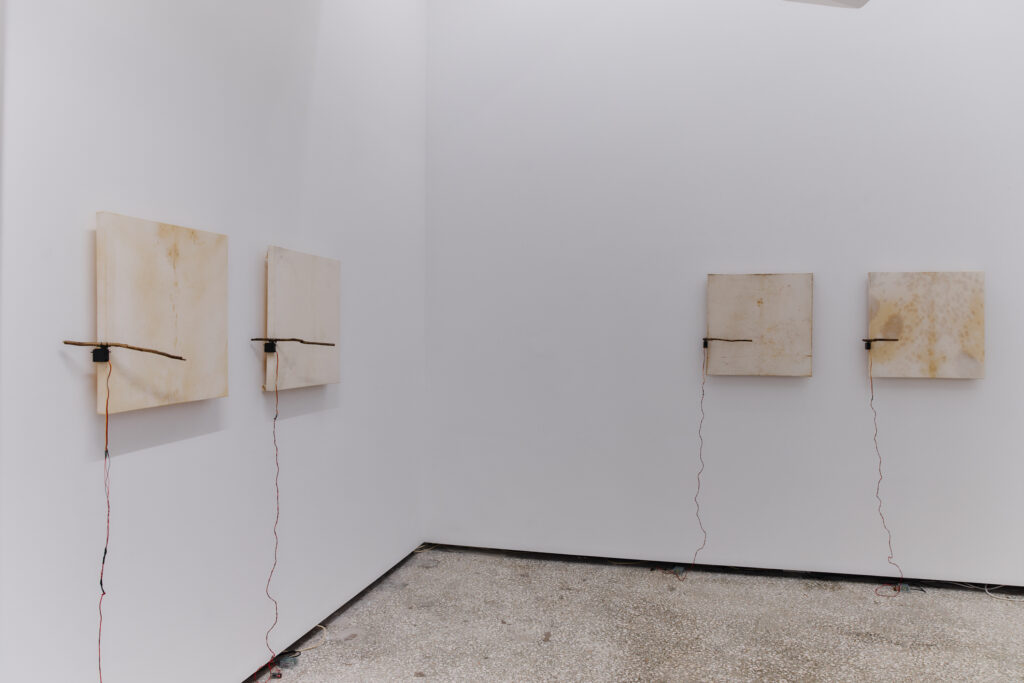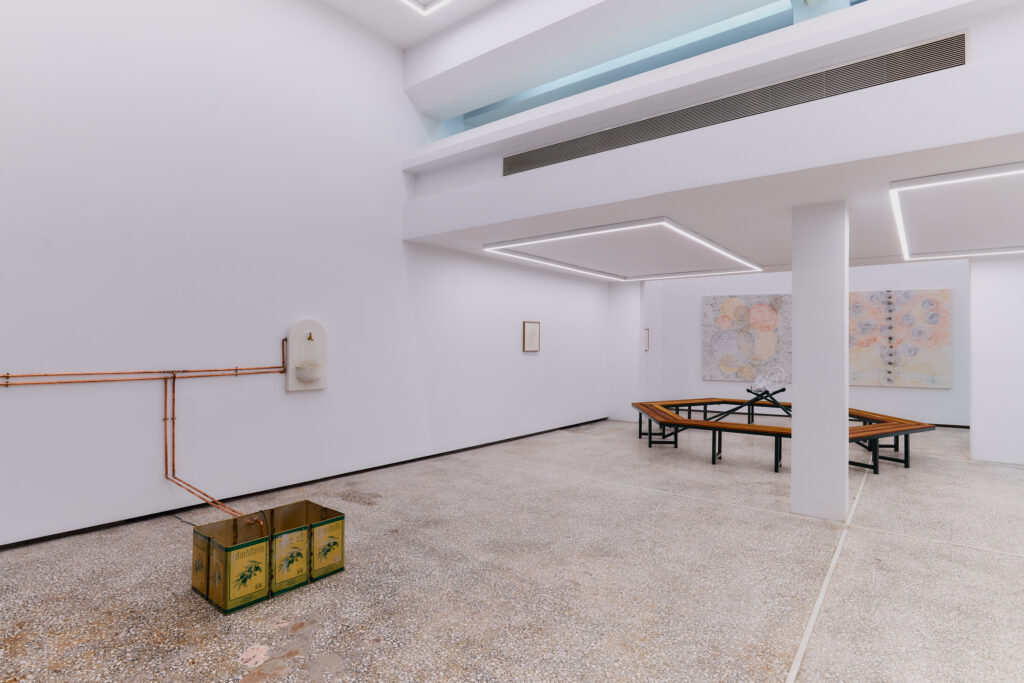Georgia Sagri
Kore
May 8, 2025–June 7, 2025The Breeder, Athens
Dear friends,
I’m writing to invite you to the opening of my solo exhibition Kore.
This exhibition gathers new works that continue my exploration of recovery, optic fever, perception, and the body. Kore is a word with many layers—it is the freestanding female sculpture, it means “daughter” in Greek, and also refers to the pupil of the eye. All those meanings inform the exhibition. Each piece can be understood as a self-portrait—not in the traditional sense of representing a fixed identity, but as a portrait of conditions, of shifting states. The kore, as daughter and pupil, becomes a figure through which these states are mediated. Each work touches on the act of seeing and being seen, of being cared for or forgotten, protected or abandoned. If the show is a self-portrait, it is one that resists resolution. It insists on process, on attention, on remaining with.
By optic fever, I refer to the condition of overstimulation and exhaustion caused by continuous visual consumption, primarily through screens. It describes the way technocapitalism accelerates perception, saturating the eye with restless images, collapsing depth and focus. In this fevered state, the act of seeing becomes disembodied, detached from attention, intimacy, or care.
Doubleness plays a central role in the show. Many works appear in pairs—interruptions, variations. I’m interested in how the eye moves between one and the other, how the act of seeing becomes unsettled and attentive. This doubling relates to several frameworks I’ve been thinking through: Freud’s “uncanny,” where the familiar becomes strange[1]; Dostoevsky’s The Double, in which the protagonist meets his identical counterpart and spirals into existential confusion[2]; and Merleau-Ponty’s understanding of vision as always doubled—the seen is always also seen[3].
But there are other figures in this show, too. The daughter, as a symbol of potential and change[4]. She holds space for something new while carrying traces of the past. In Kore, she also appears entangled in the mother’s protection, and in the lethargy of the absent father—not only as a figure missing, but as a presence defined by its absence. This absence can be an unsatisfied state, or an opening for a space of self-awareness, resistance, and the potentiality emerging within recovery.
In Greek mythology, the story of Demeter and Persephone echoes these themes. Persephone, abducted by Hades and taken to the underworld, becomes both the daughter who departs and the one who returns. Her cyclical movement between worlds represents transformation and renewal. Demeter’s grief and overprotection during Persephone’s absence turns the world barren, revealing the intensity of maternal attachment. Meanwhile, the figure of the father—Hades or Zeus—remains peripheral or emotionally withdrawn, shaping a mythic structure where the daughter’s identity forms in relation to maternal dominance and paternal distance. This myth illustrates how the daughter carries the weight of generational trauma and longing, while also creating space for rupture, independence, and emotional rebirth.
Each work invites a slowing down. A form of attention that is not about grasping, but about staying with. These pieces are not fixed images, but moving relations. They reflect my ongoing IASI (recovery) practice, developed over the past decade through one-to-one sessions across cities like London, Amsterdam, Berlin, and Athens. That work—of listening, breathing, touching—continues to inform how I think about perception, presence, and healing.
Kore is a space for the eye to rest and reawaken. It asks for your time. I hope you’ll join me at the opening.
With warmth,
Georgia Sagri
[1] Freud, Sigmund. The Uncanny, 1919.
[2] Dostoevsky, Fyodor. The Double, 1846.
[3] Merleau-Ponty, Maurice. Phenomenology of Perception, 1945.
[4] Jung, C.G. Archetypes and the Collective Unconscious, 1959.
Georgia Sagri (b. 1979, Athens) lives and works between Athens and New York. She is a pioneering visual artist who explores political, social, philosophical, and ecological themes by pushing the boundaries of somatic experiences. Her practice includes sculpture, sound, and installation, focusing on the economy of means and aiming for self-recovery and collective care through performance art. Her work has been showcased internationally at institutions such as Kunstmuseum Liechtenstein, Vaduz (2024); NEON, Athens (2024); Skulpturenpark Köln, Cologne (2024); Palais de Tokyo, Paris (2024, 2022); Castello di Rivoli Museo d’Arte Contemporanea (2023); Gropius Bau, Berlin (2023); de Appel, Amsterdam (2021); Mimosa House, London (2020); TAVROS, Athens (2020); Portikus, Frankfurt (2018); the Museum of Cycladic Art, Athens (2017); the Sculpture Center, New York (2016); the KW Institute for Contemporary Art, Berlin (2016); Kunsthalle Basel (2014); MoMA PS1, New York (2013); the Guggenheim Bilbao (2011); and MoMA, New York (2011). She has participated in major art events, including documenta 14 (2017), Manifesta 11 (2016), Istanbul Biennial (2015), Lyon Biennial (2013), and Whitney Biennial (2012). Sagri has founded the art space ΥΛΗ[matter]HYLE. Her works are in both public and private collections such as the MoMa, Kunstmuseum Liechtenstein, Onassis Foundation, Art Collection Telekom, Fondazione CRC, and the National Museum of Contemporary Art Athens. Georgia Sagri is represented by The Breeder.
